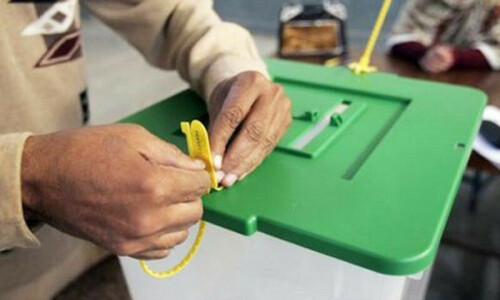KARACHI, April 2: The meeting of the cement manufacturers held on Monday, concluded without being able to put together pieces of the broken ‘cartel’, that had seen prices of cement plunge by more than Rs1,200 per ton in past five months.
Market sources said that with several irritants settled, manufacturers had sat across the table holding high hopes of revival of the cartel, but came out without managing to build anything concrete.
“This time the members failed to reach a consensus on the Afghan market”, says Abdullah Amin, analyst at Taurus Securities. “Cherat Cement wanted a much larger share of business from the Peshawar-Torkham route, the company being the prime exporter to Afghanistan”, Abdullah said, adding that several other members who did not like the idea, shot it down.
Another matter that did not go well was the demand by cement plants that had expanded capacities for an increase in their quota for Pakistani market. The proposal was not acceptable to other manufacturers who argued that in an already oversupplied market, increase in capacity should not result in an increase in quota. The meeting thus concluded on a sombre note.
Cement prices that had rallied up last month to Rs215 per bag (one ton enough to fill 20 bags of 50 kgs each) on hopes of the revival of cartel, receded almost immediately by Rs15 and market was said to be expecting prices to drop back to Rs170 per bag by the middle of this month.
A cement producer admitted that it was unwise for producers to have torn down the agreement (since November last year) on how much each would produce, breaking up of what commonly is referred to as the ‘cement cartel’ — a loose formation of country’s two dozen cement producers, that set an unwritten production ‘quota’ for each mill, which helped in stabilizing market prices.
There are around 24 cement plants, producing 17.85 million tons of cement per year”, says a sector analyst, adding that about 40 per cent of that capacity sits idle. Analysts stated that after having gone through stagnant five years (1998 through 2002), demand for cement had shown robust growth during the first half (July-Dec 2002), due mainly to lower prices. Demand in the first eight months of financial year 2003, had risen by around 20 per cent with local sales up to 7.15 million tons, from 6.13 million tons in the same period last year.
The drop in cement prices may be good news for the consumers and building contractors, but it sure is bad for the industry. Analysts forecast producers to scramble for full capacity utilization so as to extract the maximum benefit. That inevitably would result in further fall in prices, cut in margins for cement manufacturers and cash flow problems for distributors as stocks begin to pile up.










































